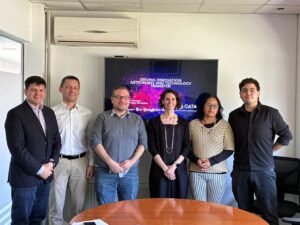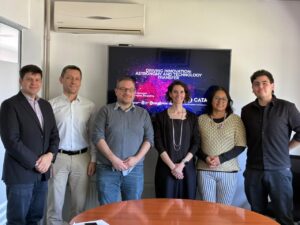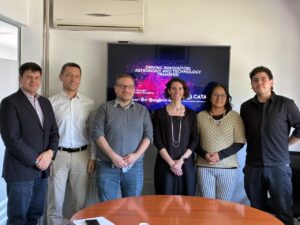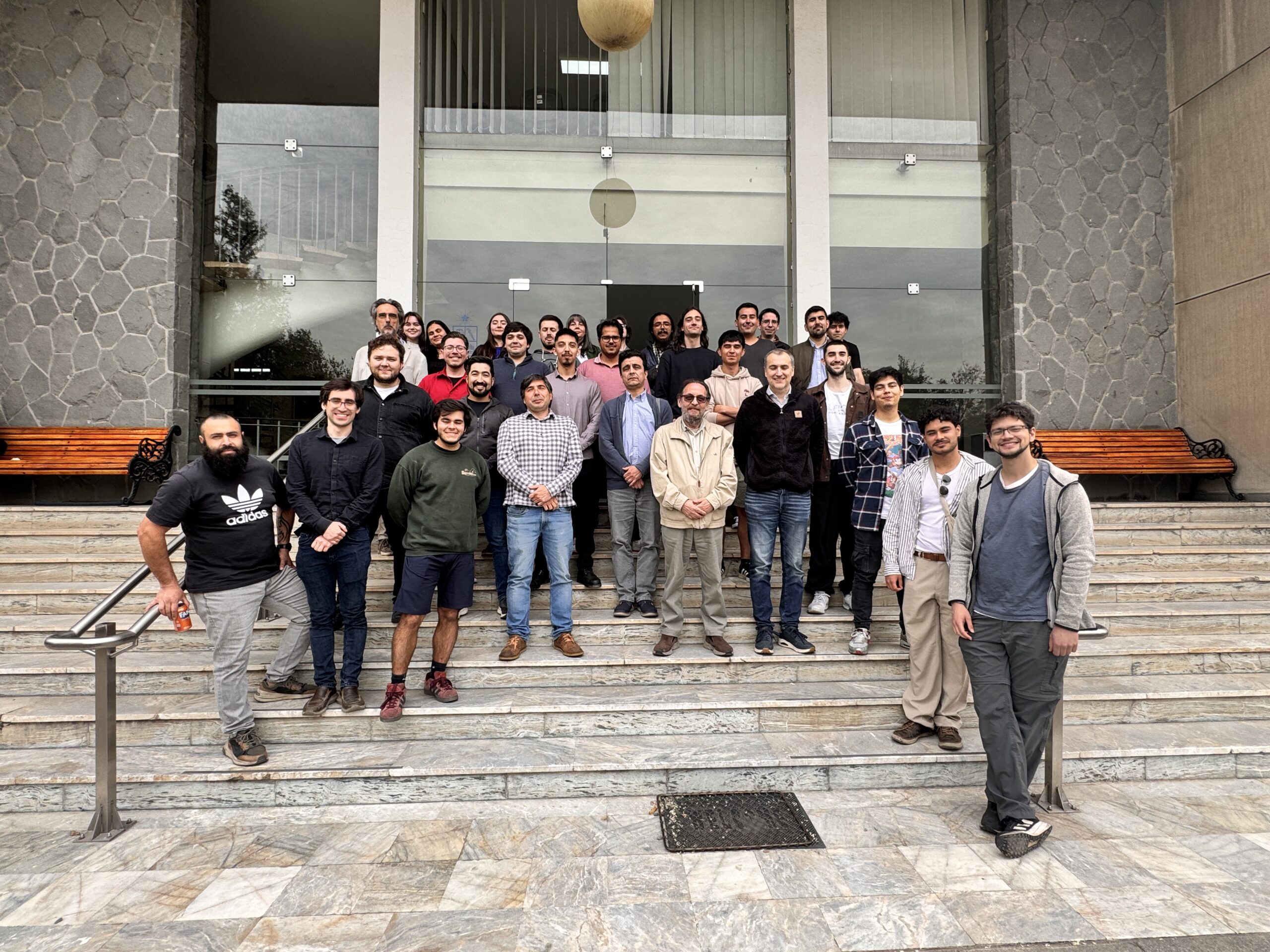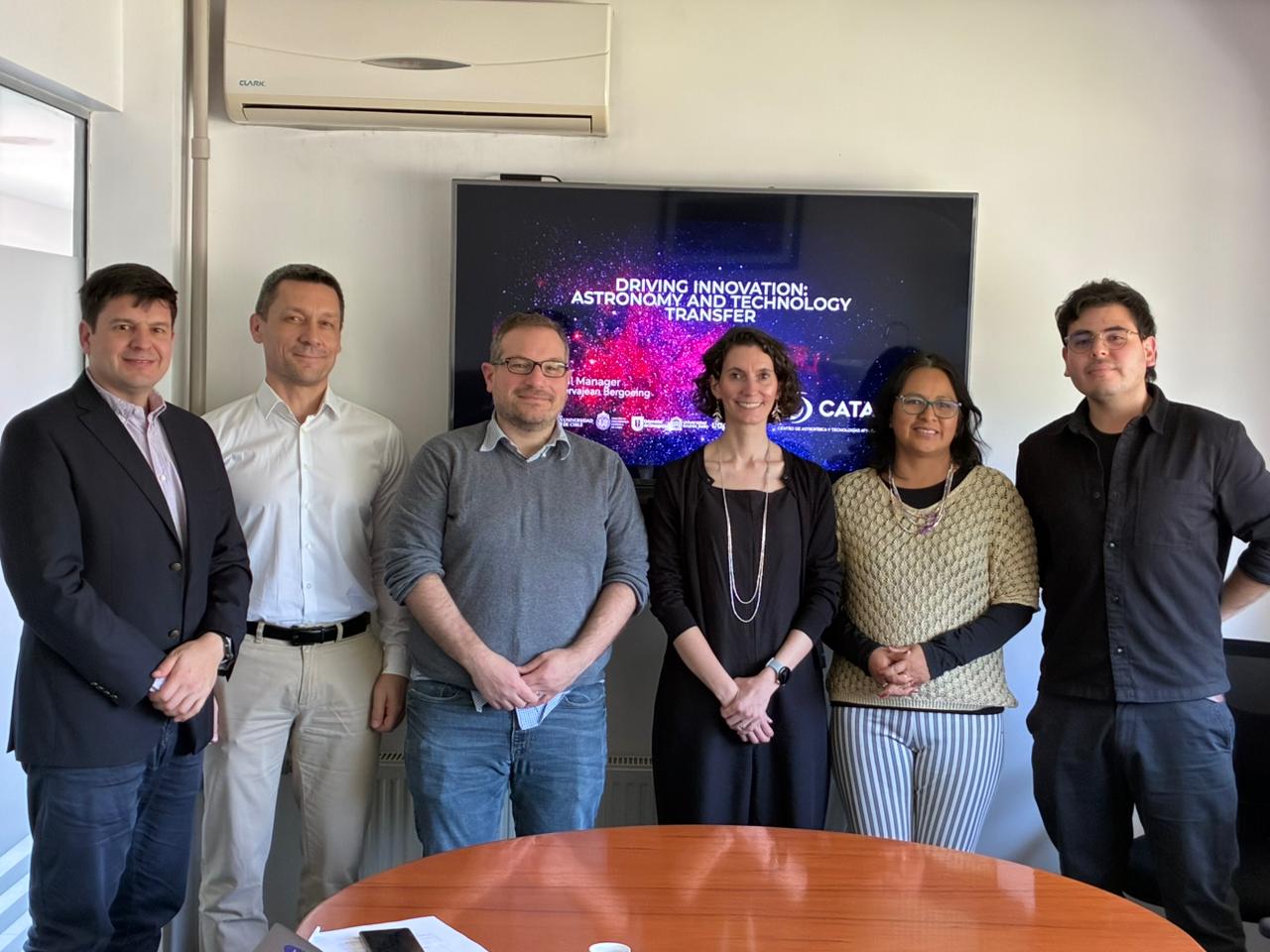
CATA receives a visit from ANID with a view to the next five-year period
The agency, which is part of the Ministry of Science, Technology, Knowledge, and Innovation, visited the Center to learn about the work carried out in the last period.
On Wednesday, October 1, the National Research and Development Agency (ANID) visited the offices of the Center for Astrophysics and Related Technologies (CATA) to learn firsthand about the work carried out as a Basal Center over the past year.
Representing ANID was executive Karol Campos, who took the opportunity to directly present the work carried out by the Center’s researchers, the scientific and technological impact achieved, and CATA’s contribution to strengthening Chilean astronomy as a whole. In addition, there was discussion on advances in human capital formation, coordination with industry, technology transfer, and gender equality in science.
Patricia Tissera, Director of CATA, welcomed the agency’s visit. “During this meeting, we received feedback on possible improvements, as well as guidance on how to communicate changes or developments that may impact the Center in a timely manner. We particularly appreciate ANID’s interest in learning firsthand about the diversity of research lines and the capabilities of the institutions associated with CATA.”
Vision for the next five years
The visit by the National Research and Development Agency (ANID) is part of the preparations for CATA’s next five-year period, a key stage in consolidating and promoting the Center’s fundamental pillars, such as scientific excellence, technology transfer, advanced training of human capital, communication, and dissemination of knowledge.
Along these lines, the Director emphasized three key challenges following ANID’s visit:
- Deepen interdisciplinary collaboration between astronomy, physics, engineering, data science, and technology to foster innovation and transfer to other productive sectors, particularly by leveraging existing knowledge of algorithms and artificial intelligence.
- Strengthen the training and retention of young talent, ensuring conditions of equity and inclusion.
- Increase the international visibility of Chilean astronomy, positioning CATA as a regional leader in research, innovation, and scientific outreach.
“These priorities aim to ensure that our institution continues to be a strategic driver for scientific and technological development in the country,” concluded Patricia Tissera.
Recent news
-
 Publicado el: 15/11/2025Leonids meteor shower 2025: What are they, when will they be visible from Chile, and what can we learn from them?
Publicado el: 15/11/2025Leonids meteor shower 2025: What are they, when will they be visible from Chile, and what can we learn from them? -
 Publicado el: 13/11/2025CATA researcher strengthens international ties during visit to the Center for Astrobiology in Madrid
Publicado el: 13/11/2025CATA researcher strengthens international ties during visit to the Center for Astrobiology in Madrid -
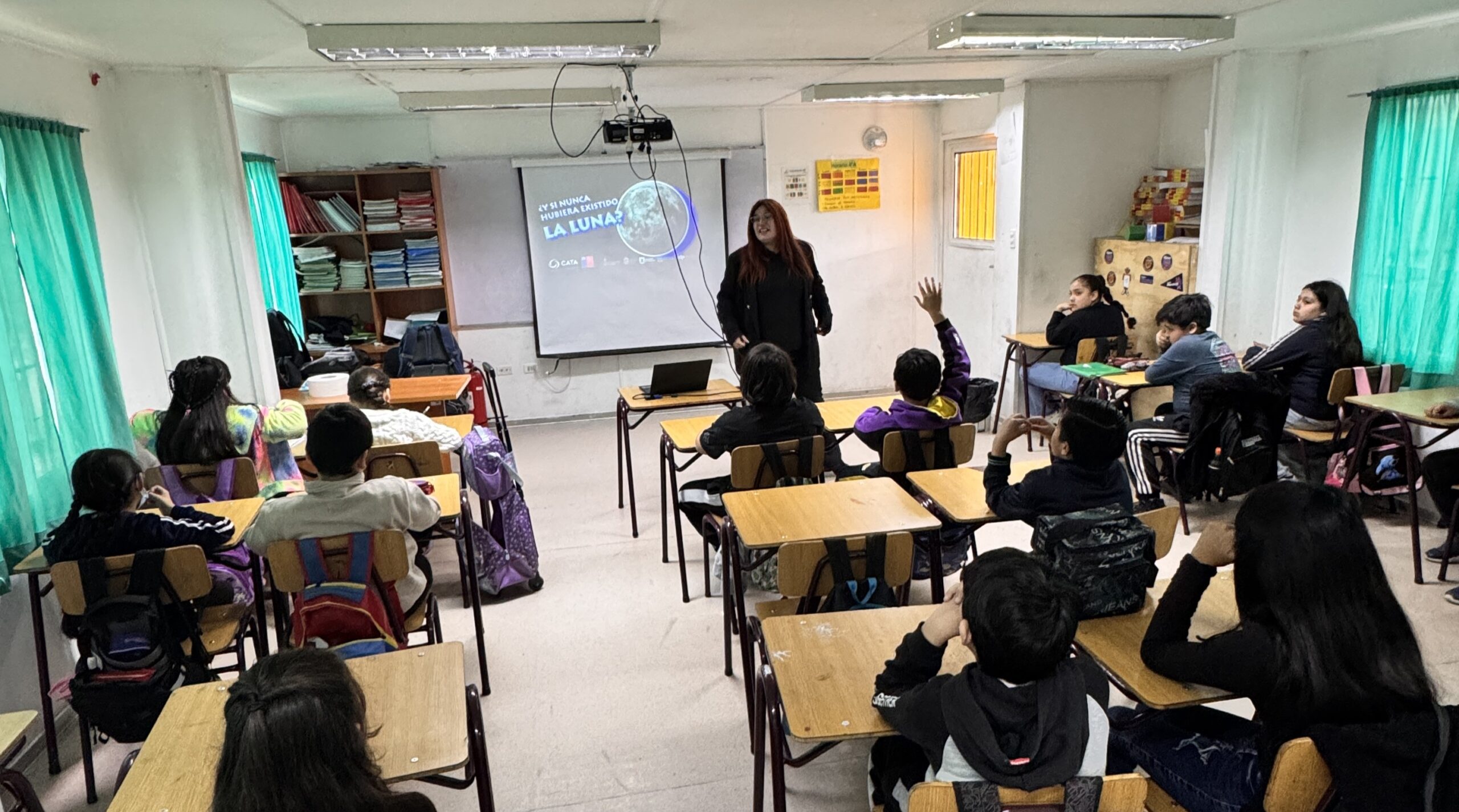 Publicado el: 12/11/2025Fourth graders learned what would happen if the Moon did not exist
Publicado el: 12/11/2025Fourth graders learned what would happen if the Moon did not exist -
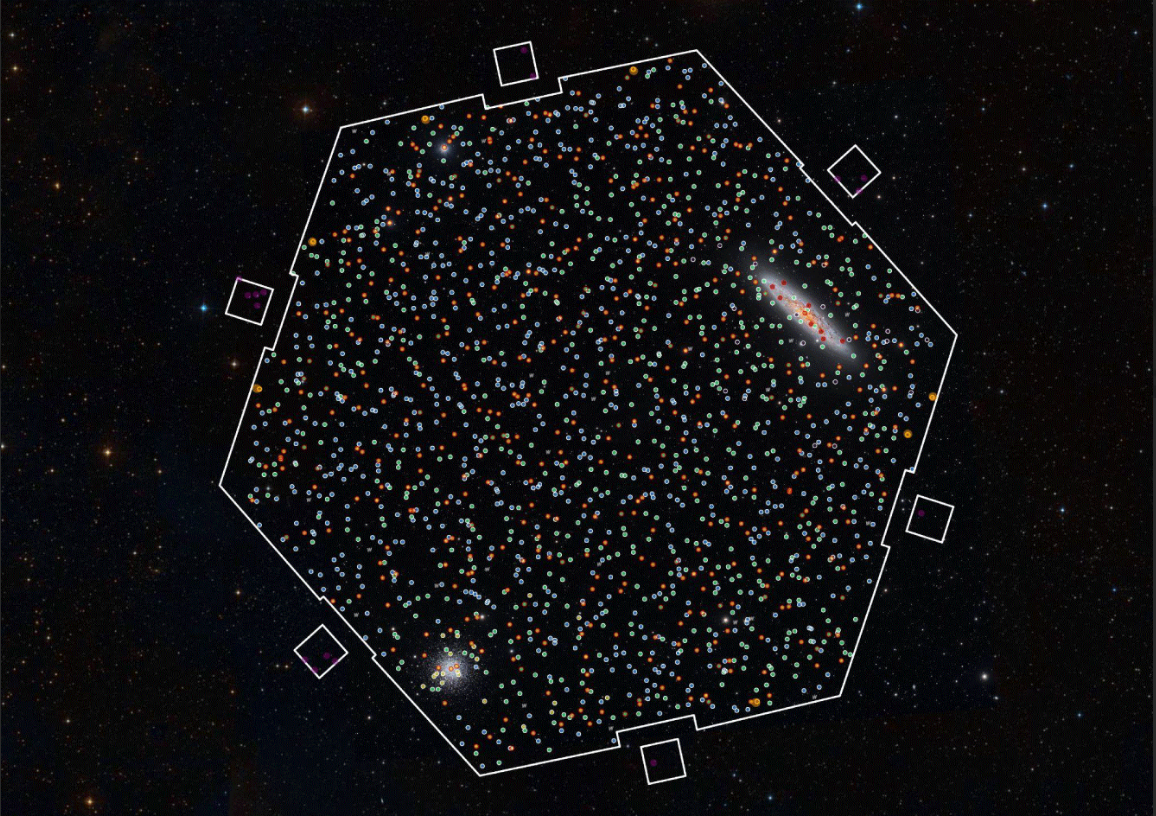 Publicado el: 29/10/2025Chile celebrates the first light of 4MOST: two major projects involving CATA astronomers begin to explore the Universe
Publicado el: 29/10/2025Chile celebrates the first light of 4MOST: two major projects involving CATA astronomers begin to explore the Universe -
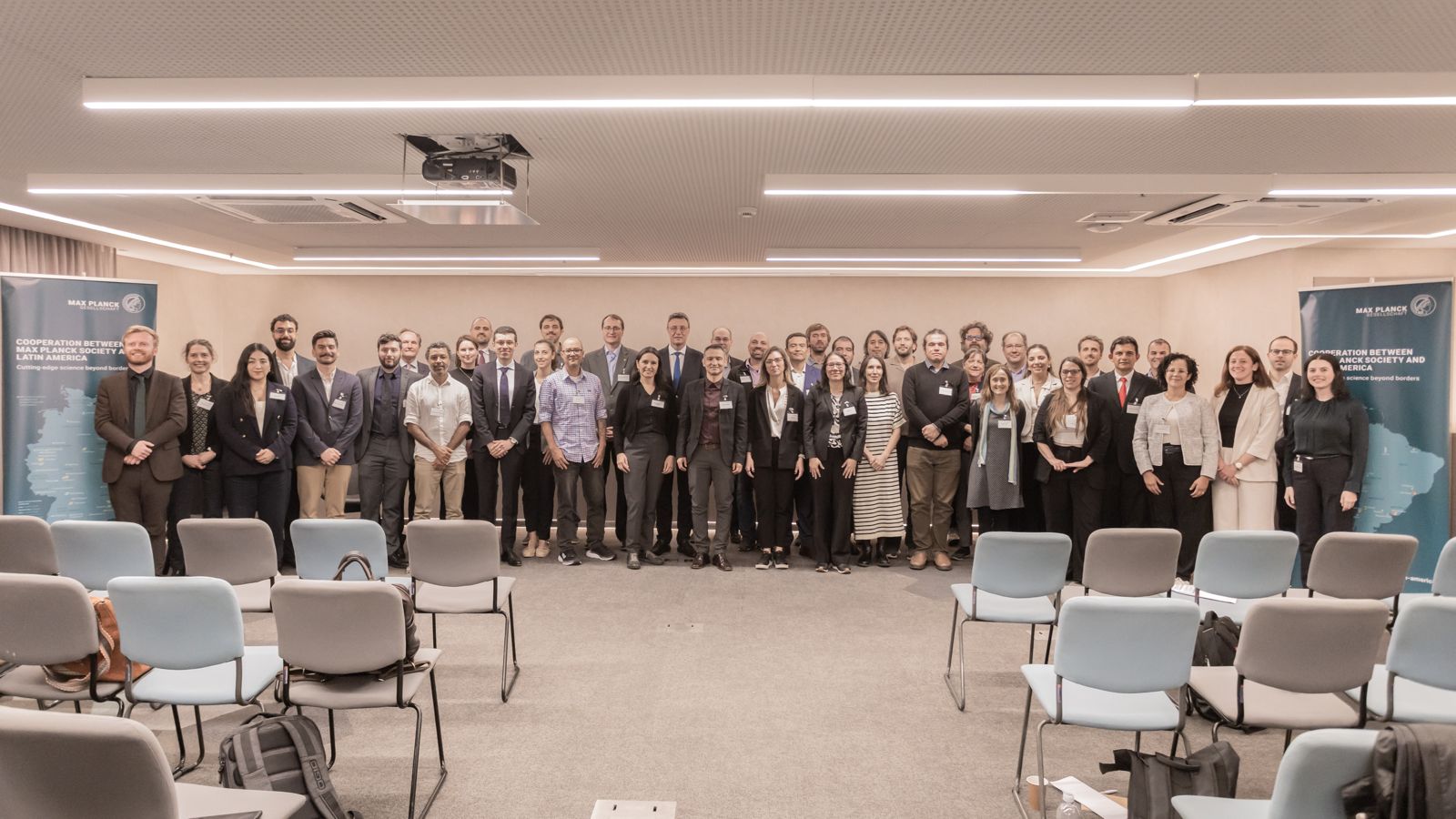 Publicado el: 24/10/2025CATA researcher participated in Max Planck regional meeting in Brazil
Publicado el: 24/10/2025CATA researcher participated in Max Planck regional meeting in Brazil
Categories list
- Acknowledgments 21
- Astrobiology 6
- AstroCluster 1
- Black holes 18
- Corporativo 57
- Cosmology 5
- Descubrimientos 22
- Disclosure 71
- Exoplanets 13
- Extension 4
- Galaxies 21
- Galaxies formation 5
- Inter y Transdisciplina 4
- Local Universe 16
- Publications 6
- Sin categorizar 34
- Solar System 21
- Stellar formation 8
- Technology 14
- Technology Transfer 16
